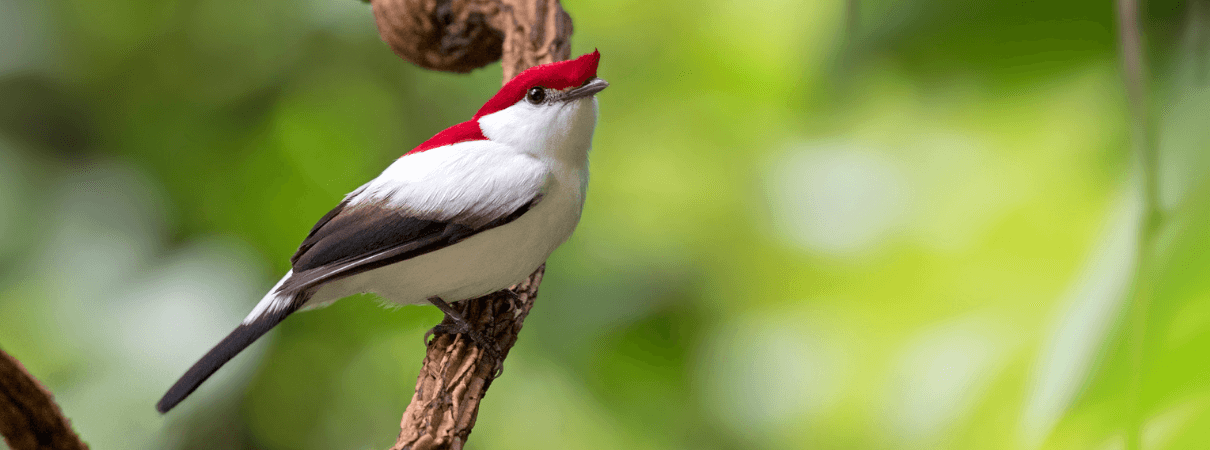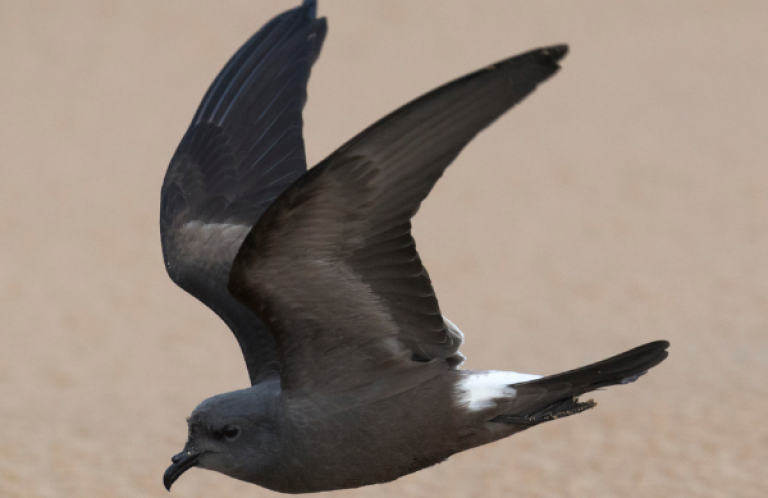New Guide Outlines Nine Steps for Creating a Highly Effective Private Reserve

Araripe Manakin in Oasis Araripe Reserve by Ciro Albano
(May 18, 2022) Privately protected areas (PPAs) are gaining momentum, as governments around the world, including those of the U.S. and Canada, set ambitious targets to protect 30 percent of their land and nearshore areas by 2030 (an initiative abbreviated as “30 x 30”). Although nongovernmental private reserves can be a powerful way for communities to conserve local biodiversity, little guidance has existed on sustainably managing such places. Until now.
This month, American Bird Conservancy (ABC) and IUCN National Committee of the Netherlands (IUCN NL) released a manual with nine steps to successfully start and maintain a PPA, titled Sustainable Nature Reserves: Guidelines to create privately protected areas.
“As the network of nature reserves and protected areas grows, we hope this manual will be a helpful resource to aid our partners and conservation colleagues in establishing and managing healthy reserves that succeed in their conservation goals and persist for future generations,” said Dan Lebbin, Vice President of Threatened Species at ABC.
Last year, the United Nations kicked off the “UN Decade on Ecosystem Restoration,” focusing on restoring biodiversity. Habitat conservation and restoration is critical to the wellbeing of many species, including 1,213 threatened bird species imperiled by land-use change. Research has shown that restoring just 5 percent of converted landscapes could avert more than 60 percent of expected avian extinctions around the globe.
Private reserves are a crucial tool in restoration work, serving to connect habitat between larger government-protected areas and conserve species that would otherwise be overlooked. ABC's network of more than 100 reserves across the Americas, for instance, protects more than 1 million acres of land across 15 countries. These reserves conserve habitat for Critically Endangered bird species like the striking Araripe Manakin in Brazil and the enigmatic Blue-billed Curassow in Colombia, while also ensuring that Neotropical migrants like the Cerulean Warbler have a safe place to live through the nonbreeding season.
Guidance on how to properly set up and run a PPA is sparse, however, leaving many individuals and organizations to learn as they go. To help provide a better path to success, the new manual zeroes in on barriers to sustainable management identified by a survey of 58 private reserve managers from around the world.
The survey found that just 4 percent of PPAs were economically self-sufficient, with nearly half dependent on continuous fundraising. Just 26 percent had business plans. Additionally, just three reserves had staff from the local community, and 16 (28 percent) had done a community consultation when creating their reserve.
“To achieve social sustainability in your private reserve, it is imperative to foster positive and trustful relationships with your neighbors from the get-go,” said Rocío Lopez de la Lama, a Research Associate at the Universidad Peruana Cayetano Heredia in Lima, Peru.
Sustainable Nature Reserves is intended to help anyone interested in creating or supporting a protected area, from communities and nonprofits to potential donors. It emphasizes practical advice on reserve management and maintenance to ensure the economic sustainability of private reserves, laid out in nine easy-to-follow steps. The manual includes guidance on everything from grant writing and understanding local land taxes to improving local community engagement and land restoration activities.
"This guidebook is what I could have really used when Asociación Armonía started our first private reserve. If we want to see more nature protected, we have to help organizations in an empathetic, sustainable way," said Bennett Hennessey, Brazil Conservation Program Director for ABC and Development Director at Asociación Armonía.
“Our planet is in trouble. Government-managed areas, Indigenous- and community-conserved areas, and privately protected areas are all important pieces of that puzzle. This manual is a welcome tool in helping us meet the grave challenges before us,” said Brent A. Mitchell, Vice Chair of the IUCN's World Commission on Protected Areas.
###
American Bird Conservancy is a nonprofit organization dedicated to conserving wild birds and their habitats throughout the Americas. With an emphasis on achieving results and working in partnership, we take on the greatest problems facing birds today, innovating and building on rapid advancements in science to halt extinctions, protect habitats, eliminate threats, and build capacity for bird conservation. Find us on abcbirds.org, Facebook, Instagram, and Twitter (@ABCbirds).
Media Contact: Jordan Rutter, Director of Public Relations| jerutter@abcbirds.org | @JERutter


















































